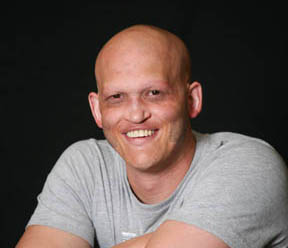The following is an excerpt from the NFED’s “A Guide to the Eyes, Ears, Nose and Throat in the Ectodermal Dysplasias.”
The common nasal problems of ectodermal dysplasias revolve around the management of nasal dryness and are usually managed without surgery. Surgery may be may be of some benefit if there is an associated internal deformity such as a deviated nasal septum or external nasal deformity resulting in a cosmetic change in the appearance of the outer nose.

A saddle-nose deformity (or “ski-slope” deformity of the outer nose) is often seen in ectodermal dysplasias. Its correction probably will not improve breathing. If done for cosmetic reasons, however, it should be done by an experienced surgeon. Cosmetic and functional concerns (breathing freely) of the nose are managed together when both exist.
What Can Be Done About Crusty Nasal Secretions?
Nasal crusting is caused by abnormal mucous production or excessive accumulation. The mucus is thick and does not drain normally. Large crusts may form that can interfere with breathing. Some form of treatment to improve the flow of mucous and provide improved humidification to the inside of the nose can be very helpful.
Preventing Nasal Crusting
Humidification is critical to prevent and treat nasal crusting. Humidification can be provided by commercial saline (salt water) drops or a spray such as Alkalot, Ayr, NaSal, or Ocean. A simple preparation may be made daily by mixing one-half teaspoon salt in one pint of water; one eyedropper full of such a solution can be placed into the nose to soften the crust and repeated as often as necessary.
Humidification in the bedroom while sleeping is also helpful. In addition to humidification, nasal irrigation with salt water under pressure using a squeeze bottle or bulb syringe several times a day is helpful in clearing crusts and thick mucus from the nose.
Although both humidification (misting) and irrigation (forceful washing) can involve the use of salt water, the irrigation offers the advantage of a forceful stream, which is more effective at washing sticky, thick secretions from the nasal cavities.
Decongestant sprays and drops such as Afrin, Dristan, and Neosynephrine may be helpful but should not be used for more than three days in a row and only with a physician’s supervision and approval. Routine antibiotic treatment does not prevent crusting but may be necessary with an acute upper respiratory illness.
The nasal crusting may be accompanied by a foul odor. Again, humidification, gentle nasal suction, or nose blowing may be helpful. If the quality of the mucus changes, consultation with a physician is appropriate.
Are Nosebleeds A Problem In Ectodermal Dysplasias?
Nosebleeds may be an occasional or a chronic problem for people affected by ectodermal dysplasias. The bleeding is usually the result of chronic dryness.
Several measures can be taken to stop the bleeding.
- The person should be placed in a sitting position and asked to tuck their chin to their chest so the blood doesn’t run down the back of their throat and cause nausea.
- Then, the fleshy part of the front of the nostrils should be tightly pinched shut between the thumb and first finger for ten minutes by the clock.
- If bleeding continues, consultation with a physician is urgently necessary.
Preventing Nosebleeds
Because the nosebleeds may be recurrent, preventive measures are appropriate.
- Avoid picking one’s nose or placing instruments (Q-tips) inside the nose is key.
- Avoid forceful noseblowing.
- Humidify the air, moistening the nose with one of the previously mentioned saline nose drops, and application of a sterile lubricating ointment such as DuraTears, Lacrilube, or Vaseline may be helpful.
- Apply the ointment liberally just inside the nostril with a finger tip several times daily.
Crusting often causes nosebleeds and prevention is just as important as treatment. A physician should evaluate recurring bleeding.
Information on treatment is suggested in this blog as a guide to what might be expected or recommended by physicians who are consulted by our families. It is important for you, the reader, to understand that the statements are generalizations about the many ectodermal dysplasias and no absolute recommendations are made or implied. These recommendations therefore should not take the place of the advice of a qualified medical professional. Trust the physicians you consult to do the right things, but also be an advocate for yourself or your child. Your doctor may appreciate a copy of this booklet to increase his or her awareness of the syndromes. The mention of any “brand name” drug is presented as an example only and must not be interpreted as endorsement of any specific product or brand or company by the National Foundation for Ectodermal Dysplasias (NFED) or its Scientific Advisory Council.
Other Posts to Check Out:
[…] Treating Common Nasal Problems in Ectodermal Dyspalsias […]
I have a problem with my left nostril and my left side of my throat always having built up mucus what could be the cause? I had surgery the ENT said I had a polyp but the removal of it did not help.
Hello, Ashley. We recommend you continue to consult with your ENT for treatment advice.
[…] Treating Common Nasal Problems in Ectodermal Dyspalsias […]